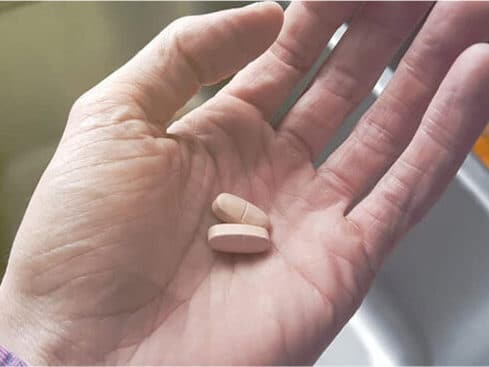How Long Does Klonopin Stay in Your System?
Quick Answer
Klonopin remains detectable in your urine for three to five days. The drug can persist in your hair for up to 90 days.
Effects of Klonopin
Like other benzodiazepines, Klonopin enhances the neurotransmitter GABA. For people with seizures and panic disorder, this sedation is helpful. But side effects are common.
Are you or someone you know struggling with addiction?
I may have a problem I am concerned for a loved onePeople who take Klonopin can experience the following symptoms:[1]
Drowsiness
Dizziness
Lack of coordination
Depression
Poor memory
Nervousness
Suicidal thoughts
How Long Do Side Effects Last?
People using Klonopin with a prescription may experience symptoms like drowsiness when they first start taking the drug. Sometimes, they fade with time.[1] Within a few weeks, people can take these medications without side effects.
It’s difficult to determine how long side effects last in people who abuse the drug. The FDA doesn’t conduct studies on high doses of the drug.

Klonopin Detection Timeline
The detection window for Klonopin depends on a few factors, but one of the most important is the type of drug test used. The detection windows one can expect are approximately as follows:[2-5]
Urine Test
3-5 days
Blood Test
2-3 days
Saliva Test
2-5 days
Hair Test
Up to 90 days
Tests Used for Klonopin Detection
Four methods of testing are typically used to detect Klonopin.[3,5]
Urine Testing
Urine testing is the most common method for most drugs, including benzodiazepine use, as it has a relatively long detection window and is less invasive than blood testing.
You will be given a cup and some basic instructions on how to get a sample. You’ll then go into a bathroom to privately fill the cup.
Blood Testing
Blood testing is a relatively uncommon way to test for drug use, as it is fairly invasive and has a shorter detection window than urine testing. Its one advantage is that it is fairly difficult to manipulate a blood test, so it may be performed on people strongly expected to try and alter their test results.
Saliva Testing
Saliva testing is often considered one of the least invasive ways to test for drug use, with very little training on the part of the people conducting the test and minimal input required from the patient. However, the detection window is shorter than with urine testing.
There is some contamination risk depending on what the patient has recently eaten or drunk.
Hair Testing
Hair follicle testing detects drug use over a long time window. As a person uses drugs, it can leave certain markers in their hair as it grows out, which can stay with the person for weeks or months.
This type of test is fairly uncommon because it is relatively invasive, requiring a small part of a person’s hair for the test. It also frequently can’t detect recent drug use, which is usually what is desired from a drug test.


How Long Does It Take for Klonopin to Kick In?
Half-Life of Klonopin
Klonopin has an elimination half-life of between 30 to 40 hours.[1]
Half-life is key to understanding how long drugs will stay in a person’s system. A drug’s elimination half-life is how long it will take for about half of the drug to be eliminated from one’s system. After four to five half-lives, the drug is not present in your system.[6]
Klonopin is a long-acting benzodiazepine, meaning it is designed to act on the body for a day or more. Drugs are generally detectable for longer than the window during which a person will significantly feel their effect.
Administration methods can also affect how the body absorbs a drug. Klonopin comes as tablets meant to be taken orally. If someone were to instead crush them up and snort or inject them, as some people misusing benzodiazepines do, the drug would be absorbed more rapidly into the body.
Factors That Affect How Long Klonopin Stays in Your Body
Klonopin can move faster or slower out of your body depending on multiple factors. Some you can control, while others you cannot.
Those factors include the following:[6]
Genetics
Your genes can influence how quickly your organs move drugs out of your body.
Age
Older people process drugs slower than younger people do.
Other drugs
Combining your Klonopin with other substances can impact how long they stay in your body.
Health
Poor organ health or digestive pre-existing conditions can make drugs stay in your body longer.
Drug history
Taking high doses for long periods could make Klonopin stay in your body longer.
How to Quit Using Klonopin
Talk to an addiction professional if you want to quit using Klonopin, especially if you have been misusing it and feel you can’t stop on your own.
Even if you’ve only been taking the drug as prescribed, benzodiazepines can cause physical dependence, and suddenly quitting without a treatment plan can potentially cause serious withdrawal symptoms.
Benzodiazepine addiction treatment programs include several components.
Benzodiazepine detox programs can help you get sober without experiencing life-threatening withdrawal symptoms. This is a much safer option than quitting Klonopin cold turkey. After detox, treatment programs can help you build sobriety skills and prevent a relapse.
Klonopin Withdrawal Symptoms
After long periods of abuse, brain cells become accustomed to Klonopin. They don’t function well without it. Quit using Klonopin abruptly, or reduce your dose too quickly, and you can experience withdrawal symptoms.
Common Klonopin withdrawal symptoms include the following:[1]
Convulsions
Psychosis
Hallucinations
Abdominal cramping
Insomnia
Finding an Addiction Treatment Program That’s Right for You
A comprehensive addiction treatment program will address the physical, mental, and emotional aspects of recovery, ensuring you receive treatment and support on all levels.
Boca Recovery Center offers medical detox, inpatient care, and outpatient options for people addicted to Klonopin. Individualized programs ensure you get the right treatment at the right time.
Find an addiction treatment program that’s right for you.
- Klonopin prescribing information. U.S. Food and Drug Administration. Published October 2013. Accessed July 4, 2023.
- Kale N. Urine drug tests: Ordering and interpretation. Am Fam Physician. 2019;99(1):33-39.
- Qriouet Z, Qmichou Z, Bouchoutrouch N, Mahi H, Cherrah Y, Sefrioui H. Analytical methods used for the detection and quantification of benzodiazepines. J Anal Methods Chem. 2019;2019:2035492. Published 2019 Sep 5.
- Nordal K, Øiestad EL, Enger A, Christophersen AS, Vindenes V. Detection times of diazepam, clonazepam, and alprazolam in oral fluid collected from patients admitted to detoxification, After High and Repeated Drug Intake. Ther Drug Monit. 2015;37(4):451-460.
- Benzodiazepines (Xanax/Valium) hair drug test. Request a Test. Accessed July 4, 2023.
- Hallare J, Gerriets V. Half Life. StatPearls. Published June 23, 2022. Accessed July 4, 2023.















